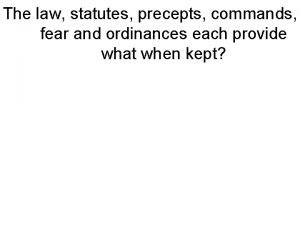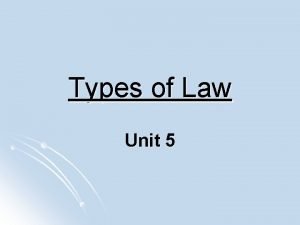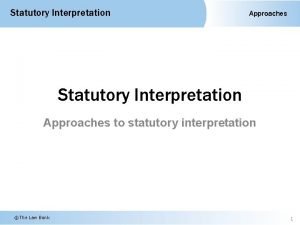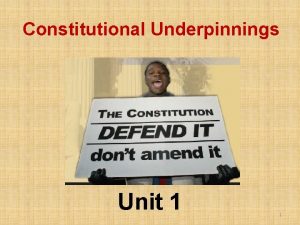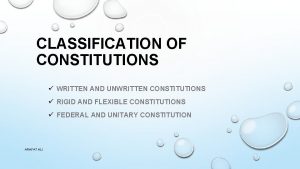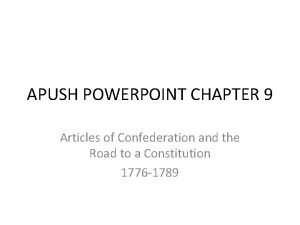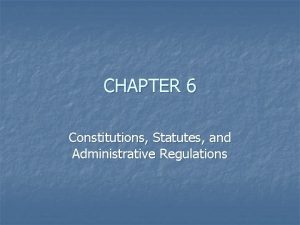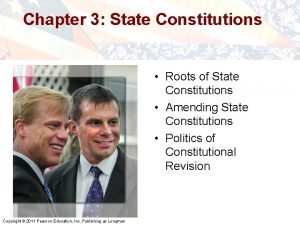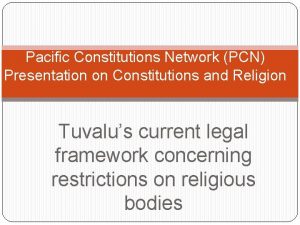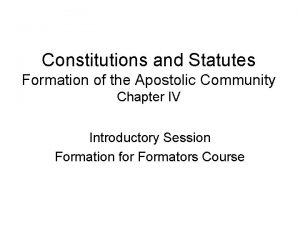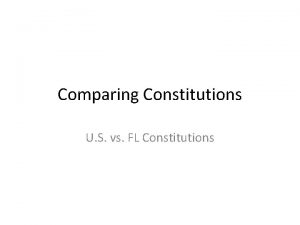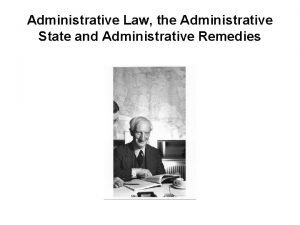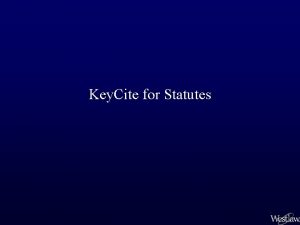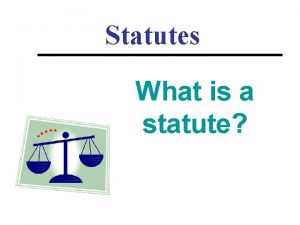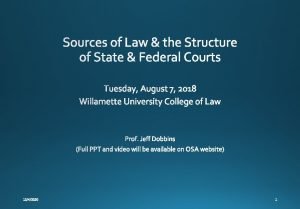Chapter 3 Constitutions Statutes Administrative Law and Court


















- Slides: 18

Chapter 3 Constitutions, Statutes, Administrative Law, and Court Rules —Research and Analysis © 2014 Delmar, Cengage Learning

Introduction • Statutory Law – Laws passed by Congress or state legislatures • Statutory Analysis – Process of determining if a statute applies, how it applies, and the effect of that application © 2014 Delmar, Cengage Learning

Anatomy of a Statute • Statutory Components – Number – Short title – Purpose clause – Scope – Definitions – Substantive provisions © 2014 Delmar, Cengage Learning

Anatomy of a Statute • Statutory Components (cont. ) – Other provisions – Annotations/reference information • Statutory Research – Process of finding statutory law that applies to a problem © 2014 Delmar, Cengage Learning

Statutory Research—Locating Statutes • Federal Law – Slip law: full text of each law is published separately – United States Statutes at Large: laws published in chronological order – United States Code (USC): laws published according to subject matter © 2014 Delmar, Cengage Learning

Statutory Research—Locating Statutes • Federal Law (cont. ) – United States Code Annotated • • General index Pocket parts Popular name table Conversion tables – United States Code Service • Similar to United States Code Annotated • Published by Lexis. Nexis © 2014 Delmar, Cengage Learning

Statutory Research—Locating Statutes • State Law – Publication of laws varies from state to state – Similar to federal law © 2014 Delmar, Cengage Learning

Statutory Research—Locating Statutes • Research Step 1: Locate the Statute – General index – Title table of contents – Popular name © 2014 Delmar, Cengage Learning

Statutory Research—Locating Statutes • Research Step 2: Update Research – Pocket parts and supplements – Shepard’s Citations – Computer-aided research © 2014 Delmar, Cengage Learning

Statutory Research—Locating Statutes • Computer-Aided Research – Westlaw and Lexis. Nexis – Free state and federal Web sites – Free university Web sites – Findlaw © 2014 Delmar, Cengage Learning

Administrative Law • Administrative Law: Publications – Federal Register – Code of Federal Regulations – Both publications on Westlaw and Lexis. Nexis © 2014 Delmar, Cengage Learning

Administrative Law • Court and Administrative Decisions – Government Printing Office, Commerce Clearing House, etc. – Shepard’s United States Administrative Citations – Shepard’s Code of Federal Regulations Citations © 2014 Delmar, Cengage Learning

Administrative Law • State Administrative Law – Varies from state to state – Often follows federal administrative law © 2014 Delmar, Cengage Learning

Court Rules • Regulate the conduct of matters brought before the court • Each jurisdiction may promulgate its own set of rules • Many states follow Federal Rules of Civil and Criminal Procedure © 2014 Delmar, Cengage Learning

Analysis: The Process • Analysis Step 1: Determine if the statute applies – Part 1: Locate all statutes – Part 2: Determine which statutes apply © 2014 Delmar, Cengage Learning

Analysis: The Process • Analysis Step 2: Analyze the Statute – Part 1: Read the statute – Part 2: Identify the statutory elements © 2014 Delmar, Cengage Learning

Analysis: The Process • Analysis Step 3: Apply the Statute – Chart format – Narrative summary © 2014 Delmar, Cengage Learning

General Considerations • Two Major Considerations in Statutory Analysis – Legislative history – Canons of construction • Examples: expressio unius, ejusdem generis, pari materia, last antecedent rule, intended remedy © 2014 Delmar, Cengage Learning
 Car lemon law texas
Car lemon law texas Chapter 252 florida statutes
Chapter 252 florida statutes Statutes and precepts
Statutes and precepts Interpretation and construction
Interpretation and construction Examples of statutes
Examples of statutes R v allen (1872) lr 1 ccr 367
R v allen (1872) lr 1 ccr 367 State and federal constitutions
State and federal constitutions National government vs federal government
National government vs federal government State and federal constitutions
State and federal constitutions Is there a basketball court above the supreme court
Is there a basketball court above the supreme court How many constitutions has georgia had
How many constitutions has georgia had What are the concerns of the constitutions?
What are the concerns of the constitutions? Three constitutions of pakistan
Three constitutions of pakistan How many constitutions has missouri had
How many constitutions has missouri had What is a written constitution
What is a written constitution Conventions to ratify constitutions apush
Conventions to ratify constitutions apush Newton's first law and second law and third law
Newton's first law and second law and third law Newton's first law of motion
Newton's first law of motion Administrative law
Administrative law


